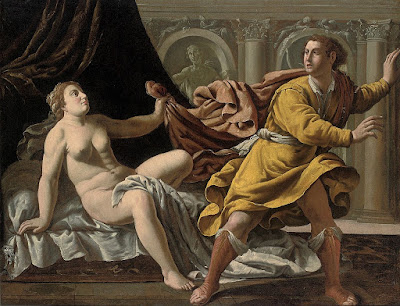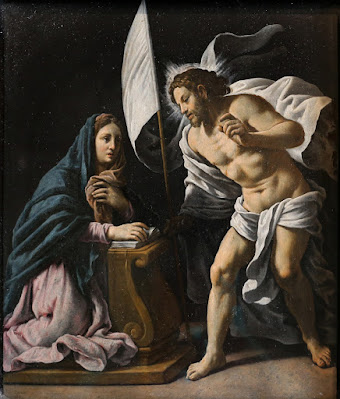 |
| Marcantonio Bassetti Dead Christ supported by the Virgin and Mary Magdalen ca. 1616 drawing Royal Collection, Great Britain |
 |
| Marcantonio Bassetti Dead Christ supported by the Virgin and Mary Magdalen ca. 1616 oil on black marble (pietra da paragone) Fitzwilliam Museum, Cambridge |
 |
| Marcantonio Bassetti Dead Christ supported by the Virgin and Mary Magdalen before 1630 oil on slate private collection |
 |
| Marcantonio Bassetti Battle between Centaurs and River Gods ca. 1617 drawing (design for basin) Museo di Castelvecchio, Verona |
 |
| workshop of Marcantonio Bassetti Joseph and Potiphar's Wife before 1630 oil on canvas private collection |
 |
| Marcantonio Bassetti St Sebastian tended by St Irene ca. 1625-26 oil on canvas Musée des Beaux-Arts de Marseille |
 |
| Marcantonio Bassetti Resurrection of the Dead ca. 1610 drawing Art Institute of Chicago |
 |
| Marcantonio Bassetti The Transfiguration before 1630 drawing Teylers Museum, Haarlem |
 |
| Marcantonio Bassetti Risen Christ appearing to the Virgin before 1630 oil on black marble (pietra da paragone) Museo di Castelvecchio, Verona |
 |
| Marcantonio Bassetti St Peter liberated from Prison by an Angel before 1630 oil on black marble (pietra da paragone) Museo di Castelvecchio, Verona |
 |
| Marcantonio Bassetti The Flagellation before 1630 drawing Morgan Library, New York |
 |
| Marcantonio Bassetti Priests exorcising a Woman possessed by a Demon before 1630 drawing Musée du Louvre |
 |
| Marcantonio Bassetti Portrait of a Nun 1611 oil on panel Museo di Castelvecchio, Verona |
 |
| Marcantonio Bassetti Portrait of an Old Man with a Glove ca. 1610-30 oil on canvas Museo di Castelvecchio, Verona |
 |
| Marcantonio Bassetti Adoration of the Shepherds ca. 1621-23 oil on canvas private collection |
"Marcantonio Bassetti, whose artistic personality is only beginning to emerge from obscurity, was born in Verona and after studying under Domenico Brusasorci moved to Venice, where he seems to have studied the works of Tintoretto, Veronese, the Bassani, and Palma Giovane. In 1616 he is recorded in Rome, where he was influenced by the followers of Adam Elsheimer. He is claimed by Roberto Longhi as a follower of Caravaggio, and was included in the Caravaggio exhibition of 1951, but he is only Caravaggesque in the very widest sense of the term. Bassetti's style is an essentially eclectic blending of elements taken from late sixteenth-century Venetian painting and others picked up in Rome, so that historically he forms a parallel with Carlo Saraceni, with whom he collaborated. Having resettled in Verona, Bassetti died there of plague in 1630."
– from biographical notes published by Christie's, London